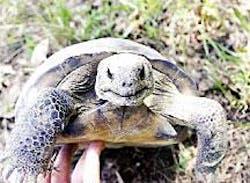Gophers win!
This year's Pipeline Economics Report that begins on p. 52 reveals, as always, the latest data on what it costs to build and operate an oil and gas pipeline in the US.
What a company thought it would cost to build a pipeline in, say, Alabama or Montana is revealed against what the company actually spent. What another company earned from operations in 2001 can be compared (with the help of OGJ's Sept. 3, 2001, report) with what that company earned in 2000.
Numbers, numbers, more numbers. The report can sometimes seem such a blizzard of numbers that it obscures the reality behind them: The dirty, sometimes dangerous, and occasionally profitable jobs of laying line pipe and moving oil and natural gas from supply sources to market uses.
And in recent years, pipeline companies have had to be aware of just how their construction can affect worlds around it, especially those worlds inhabited by creatures that rarely walk on two legs or need airplanes to fly.
One such story came out of work in Mississippi on the Destin pipeline, whose construction in 1998 actually helped one of these creatures.
The gopher tortoise
Westford, Mass.-based ENSR International's Norcross, Ga., office helped operator El Paso Corp., Houston, meet government regulations related to endangered species.
The 36-in. Destin pipeline cuts through five counties, most of it rural Gulf of Mexico coastal plain. The company compiled a list of 11 protected species that might be found on the route and identified the federally protected gopher tortoise (see photo below) as the most seriously affected: Four of the five counties were within the tortoise's range.
ENSR senior biologist Dave Thomas and El Paso environmental manager Jon Barfield say the tortoises are particularly abundant in the DeSoto National Forest, where the pipeline was to occupy an existing powerline right-of-way (ROW). In fact, the tortoises often prefer open, grassy ROWs.
Construction, therefore, ran the danger of killing more tortoises than was acceptable. To prevent this, ENSR and El Paso developed a plan to capture gopher tortoises living along the ROW and relocate them to burrows next to the pipeline corridor.
Before construction, field biologists surveyed the ROW and documented 213 gopher tortoise burrows on or next to the corridor. Of these, biologists examined 91 on the ROW and relocated 34 tortoises. Thomas and Barfield say that throughout construction, biologists routinely resurveyed the corridor for new burrows, inspected open trenches, and monitored construction.
A postconstruction survey discovered that gopher tortoises had moved into previously unused areas of the pipeline corridor. A year after construction, more surveys found 22 burrows on the restored pipeline corridor and 42 more next to the ROW.
At least four gopher tortoise col- onies lived in the pipeline corridor, and these colonies now included juvenile burrows, say Thomas and Barfield. Although gopher tortoises had been removed from the ROW in only two counties, the surveys now found them on the ROW in all four counties.
Biologists suspect the pipeline corridor linked previously isolated gopher tortoises, enabling them to reproduce.
The cost, the benefits
Thomas and Barfield say that lessons learned on this project will benefit subsequent permitting and construction that involve natural resource challenges. They don't say what it cost the companies to carry out this part of the construction.
In truth, however, what used to be extraordinary costs to mitigate environmental effects of pipeline construction are now considered routine expenses-routine, and necessary.
And sometimes-as on the Destin project-the destruction that precedes construction may end up improving natural habitat.
Gophers win; we win.

